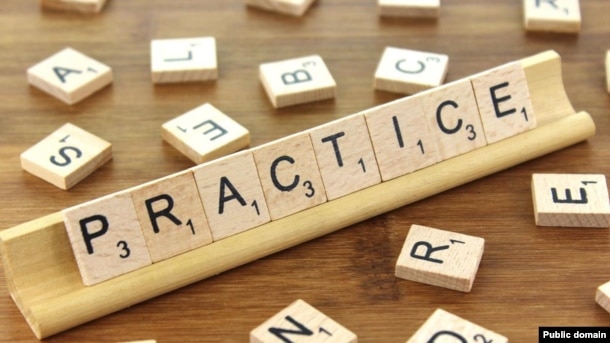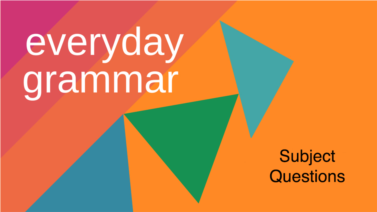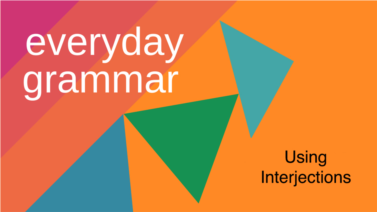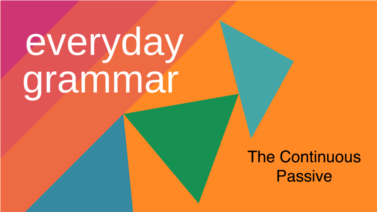
English can be a complex language to master. It has a lot of rules - and breaks many of them.
No matter your level of English, forming questions can be one of the more vexing parts of mastering the language. The good news is that we are here today to make that process easier.
In a recent Everyday Grammar, we told you about subject questions - questions we ask when we want to learn the who or the which of an action.
Today, we will tell you about yes or no questions.
A yes or no question is a question that expects an answer of “yes” or “no.” For example:
Are you coming to the show?
Has she been to Montreal?
Does this color look good on me?
As you can hear, yes or no questions do not begin with common question words such as “why,” “where,” “what,” “how,” “when,” and “which.”
Using Auxiliaries
Instead, they often begin with the verbs “do,” “be” or “have.” You already know these three verbs as among the most common in English. But they have a second, separate usage: as auxiliary verbs.
We use auxiliary verbs with main verbs to do things like form questions and verb tenses. Auxiliary verbs are sometimes called “helping verbs” because they help main verbs to carry meaning.
We form yes or no questions with an auxiliary verb + subject + main verb. Listen for that structure in the examples:
Are you coming to the show?
Has she been to Montreal?
Does this color look good on me?
‘Do’ ‘does’ and ‘did’
Notice that the last example begins with “does.”
When we use “do,” “does,” or “did” to begin a yes or no question, it shows there was no auxiliary present in its statement form.
Present simple and past simple statements do not contain auxiliary verbs. For example, the statement form of the question “Does this color look good on me?” is “This color looks good on me” and is present simple.
Let’s hear a few more statements and their question forms. Notice that the statements do not contain an auxiliary verb. And, the questions follow the same structure, auxiliary verb + subject + main verb:
I went to the kitchen.
Did you go to the kitchen?
You speak English well.
Do you speak English well?
He lives in Washington, D.C.
Does he live in Washington, D.C.?
Using Modals
Not all yes or no questions begin with auxiliary verbs. Many begin with modal verbs. We use modal verbs to express possibility, necessity and permission. Sometimes, modal verbs are called “modal auxiliaries.” But, for today, we will simply call them “modals” or “modal verbs.” “Can,” “could,” “may,” “might,” and “should” are examples of modal verbs.
We form these yes or no questions with a modal verb + subject + main verb. Listen for that structure in these examples:
Can we meet for lunch tomorrow?
Should I take her advice?
May I have your name, please?
Be + subject
Some yes or no questions have neither an auxiliary nor a modal. When we ask yes or no questions where the main verb is “be,” the structure becomes be + subject. Let’s hear how that sounds:
Is she the owner of the company?
Was he ready when you arrived?
Are you a language teacher?

Other verb tenses
At times, there is more than one auxiliary verb in a yes or no question. Or, there is a modal verb plus one or more auxiliary verbs. This happens in yes or no questions with perfect tenses and with passive questions.
For example, in the question, “Should I have been attending all of the meetings?” the verb tense is present perfect continuous. There is the modal “should” and the auxiliaries “have” and “been.”
But, for today, we’ll stay with basic forms of yes or no questions. The goal is that you gain confidence in forming these questions. And, that comes with practice.
Answering yes or no questions
By now, you might be wondering: How do I answer a yes or no question? You can answer with a simple “yes” or “no.”
But, suppose you wanted to answer with something a little longer. When we answer yes or no questions, we do not usually repeat the full question. Instead, we answer with the auxiliary or modal from the question. The structure is yes or no + subject + auxiliary or modal.
Here’s what it sounds like with auxiliaries:
Did you go to the bathroom?
Yes, I did.
Has she been to Montreal?
Yes, she has.
Are you a language teacher?
Yes, I am.
And, with modals:
Should I take her advice?
No, you shouldn’t.
May I have your name, please?
Yes, you may.
Can we meet for lunch tomorrow?
Yes, we can.
Notice that the auxiliary or modal in each answer matches the auxiliary or modal from each question.
So, do you want to practice yes or no questions now? Check out the exercises on our website and write your responses in the Comments area.
I’m Alice Bryant.
Alice Bryant wrote this story for Learning English. Caty Weaver was the editor.
Words in This Story
vexing - adj. irritating or worrying
confidence - n. a feeling or belief that you can do something well or succeed at something
practice - n. to do something again and again in order to become better at it
aloud - adj. in a way that can be clearly heard
comfortable - adj. being in a state of physical or mental ease

Practice Exercises
Now, you try it! Use these practice exercises to help you improve at forming yes or no questions.
1- With a friend or family member, practice saying aloud the example questions, statements and responses from today’s program. Doing this can help you become much more comfortable with the sound and structure of yes or no questions.
2- Make the below statements into yes or no questions. Then, respond to each question:
Example:
I have a pen. (Statement)
Do you have a pen? (Question)
Yes, I do. (Answer)
I have a pen.
We can take the dog to the park.
You are annoyed with me.
This is the first time I’ve traveled abroad.
He has been in the meeting for a long time.
They understood the teacher’s explanation.
The woman likes the gift.
I should stay home tonight.
3- After doing the two practice exercises above, try writing your own yes/no questions. Remember that, the more you practice, the more you will improve.
Write your responses in the Comments area.


